With their majestic wingspans and graceful flight, Albatrosses are among the most iconic seabirds inhabiting the world’s oceans.
Belonging to the family Diomedeidae, these remarkable birds are renowned for their ability to soar vast distances with minimal effort, utilizing dynamic soaring techniques to traverse the expansive ocean expanses where they spend most of their lives.
Albatrosses are predominantly found in the Southern Hemisphere, particularly in the open waters of the Antarctic, sub-Antarctic, and temperate regions. They exhibit a remarkable lifespan, with some species living for decades and even up to 60 years.
These avian wonders play a crucial role in marine ecosystems, serving as indicators of ocean health and contributing to nutrient cycling through their feeding habits.
However, albatross populations face numerous threats, including habitat degradation, pollution, and incidental bycatch, making their conservation important.
Physical Characteristics of Albatrosses
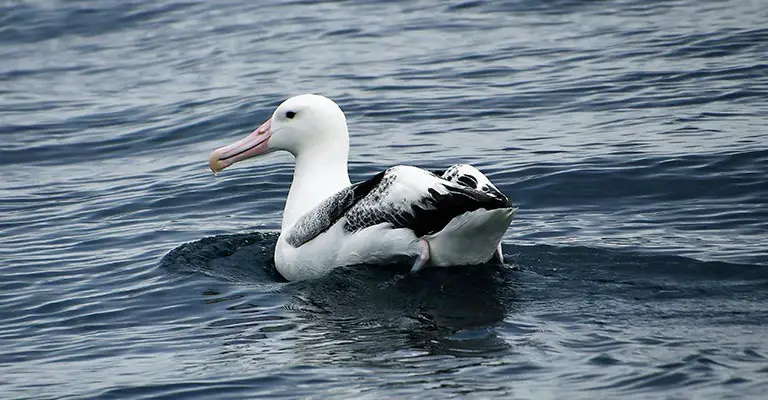
Identifying albatrosses can be captivating, as these majestic seabirds possess distinctive physical characteristics that set them apart from other avian species.
Here are eight key points to consider when identifying albatrosses:
Large Size and Wingspan
Albatrosses are notably large birds, with wingspans that can exceed 11 feet (3.4 meters) in some species, making them one of the biggest flying birds on Earth.
This impressive wingspan allows them to soar effortlessly over vast oceanic expanses for extended periods.
Long, Narrow Wings
Albatrosses have long, narrow wings perfectly adapted for gliding and dynamic soaring. These wings are significantly longer in proportion to their bodies compared to other seabirds, giving them a distinctive silhouette in flight.
White Plumage
Most albatross species have predominantly white plumage, contrasting sharply with the dark ocean waters below.
Some species may have varying degrees of black or gray markings on their wings or backs, but the overall impression is luminous whiteness.
Yellow Bill and Tubular Nostrils
One of the most noticeable features of albatrosses is their large, hooked bills, which are usually yellow.
Additionally, they have tubular nostrils located on either side of the bill, which are thought to aid in excreting excess salt ingested from seawater.
Webbed Feet
Albatrosses have webbed feet, adapted for swimming and aid in takeoff from the water’s surface. These feet are relatively small in proportion to their body size and are primarily used for steering while swimming.
Distinctive Flight Patterns
In flight, albatrosses exhibit a characteristic gliding motion, rarely flapping their wings except during takeoff and landing. They often soar low over the waves, effortlessly riding air currents with minimal effort.
Long, Streamlined Bodies
Albatrosses have sleek, streamlined bodies that minimize air resistance during flight. Their bodies are built for efficiency in the air, allowing them to cover vast distances with minimal energy expenditure.
Graceful Movements on Land
Despite their large size, albatrosses are surprisingly graceful on land, moving with a distinctive waddling gait. On solid ground, they may tuck their long wings close to their bodies, giving them a more compact appearance.
Identifying albatrosses involves observing a combination of physical characteristics, including their large size, yellow bill, webbed feet, distinctive flight patterns, streamlined bodies, and graceful movements both in the air and on land.
These unique features make albatrosses unmistakable and fascinating subjects for birdwatchers and naturalists alike.
Taxonomy of Albatrosses
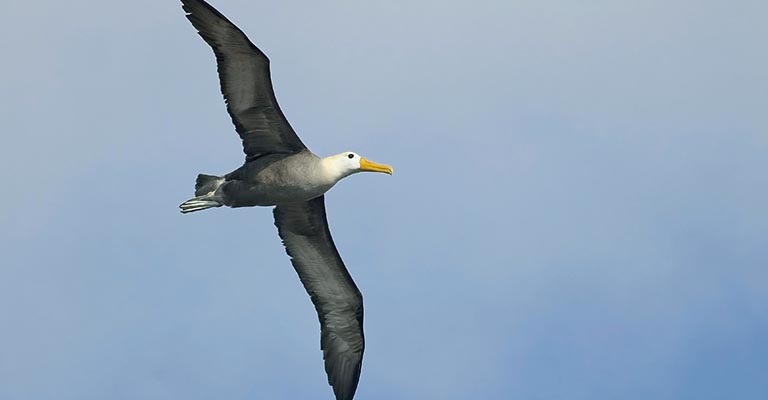
Here is a table that will showcase all the taxonomical details of Albatrosses:
| Taxonomic Rank | Classification |
| Domain | Eukaryota |
| Kingdom | Animalia |
| Phylum | Chordata |
| Class | Aves |
| Order | Phaethontiformes |
| Family | Diomedeidae |
The albatross family comprises several species with unique characteristics and distribution across the world’s oceans. Here’s a brief overview of the species mentioned:
Short-tailed Albatross (Phoebastria albatrus)
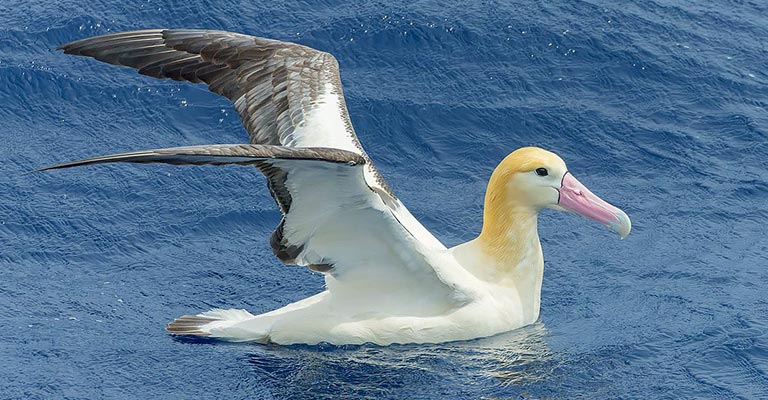
Recognizable by its large size, white body, and pale yellow bill, the short-tailed albatross is one of the rarest and most endangered species. It inhabits the North Pacific Ocean and breeds on Torishima and the Senkaku Islands.
Black-footed Albatross (Phoebastria nigripes)
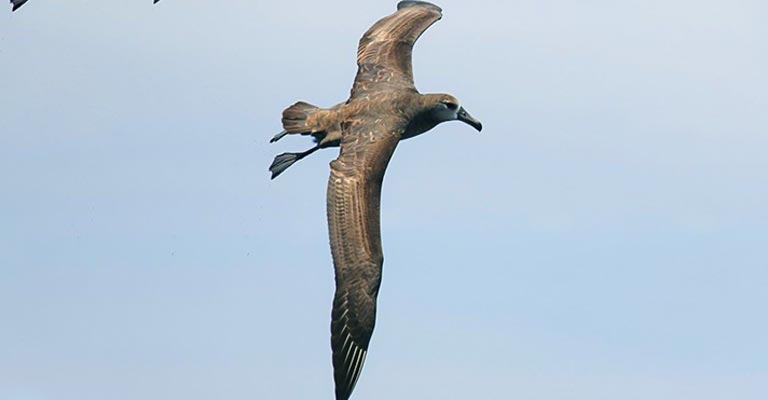
Named for its dark feet, this species has a black back and wings with a white face and underparts. It nests primarily in the Northwestern Hawaiian Islands and the Japanese archipelago.
Laysan Albatross (Phoebastria immutabilis)
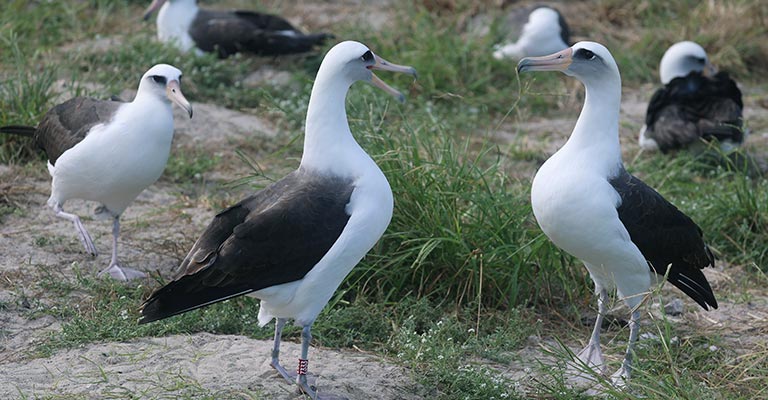
The Laysan albatross is a familiar sight in the North Pacific with a striking appearance characterized by a white body, black wings, and a yellow-orange bill. It breeds primarily on islands such as Laysan and Midway Atoll.
Snowy Albatross (Diomedea exulans)
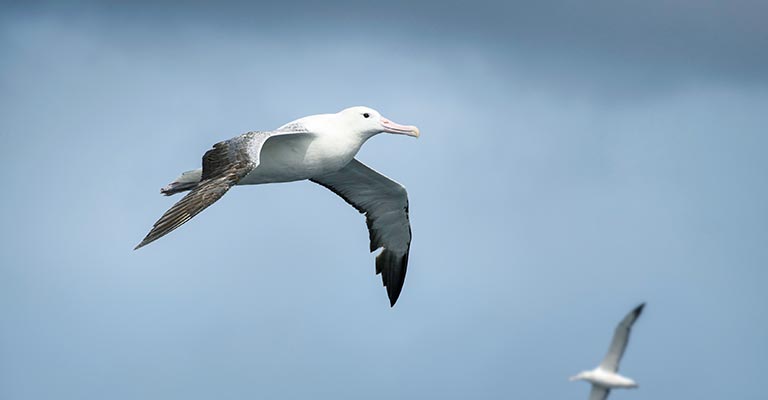
Also known as the wandering albatross, the snowy albatross is the largest of all albatross species. It has a white body with black wingtips and a pink bill with a distinctive hook. It ranges widely across the Southern Ocean.
Light-mantled Albatross (Phoebetria palpebrata)
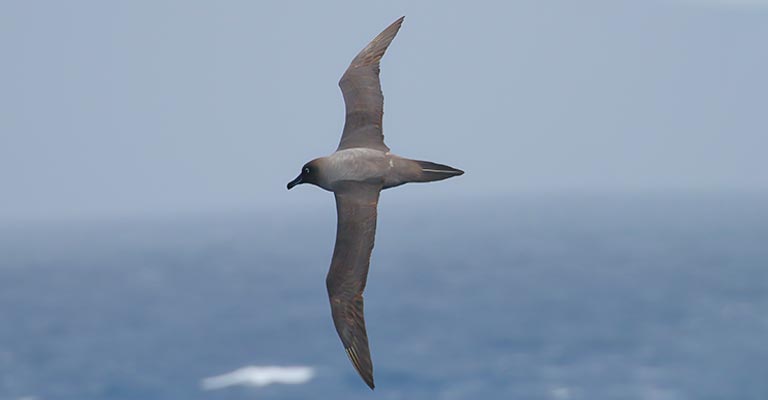
This species is named for the pale gray mantle on its upperparts. It has a white head, neck, underparts, black flight feathers, and a dark bill. It breeds on islands such as South Georgia and the Falkland Islands.
Black-browed Albatross (Thalassarche melanophris)
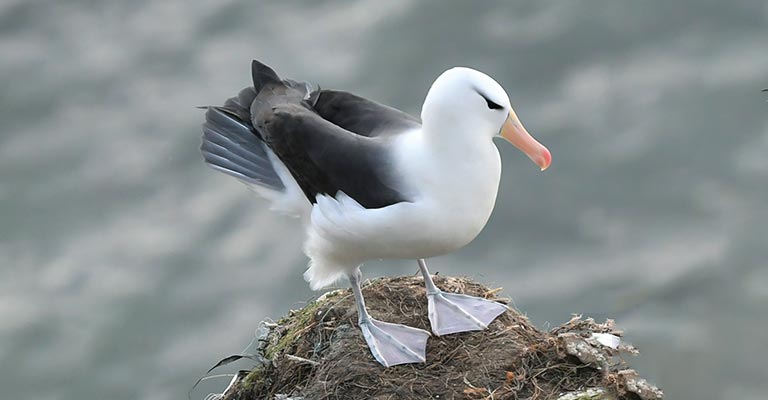
Recognizable by the dark eyebrow stripe above its eye, the black-browed albatross has a white body with dark upper wings and a yellow bill. It nests on islands in the Southern Ocean, including the Falkland Islands and South Georgia.
Salvin’s Albatross (Thalassarche salvini)
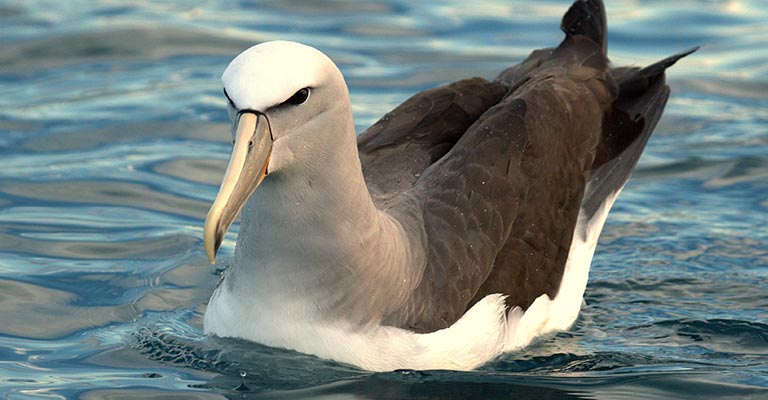
Named after the English ornithologist Osbert Salvin, this species has a dark mantle and upper wings, a white face, throat, underparts, and a yellow-orange bill. It breeds on islands such as the Antipodes Islands and the Bounty Islands.
Chatham Albatross (Thalassarche eremita)
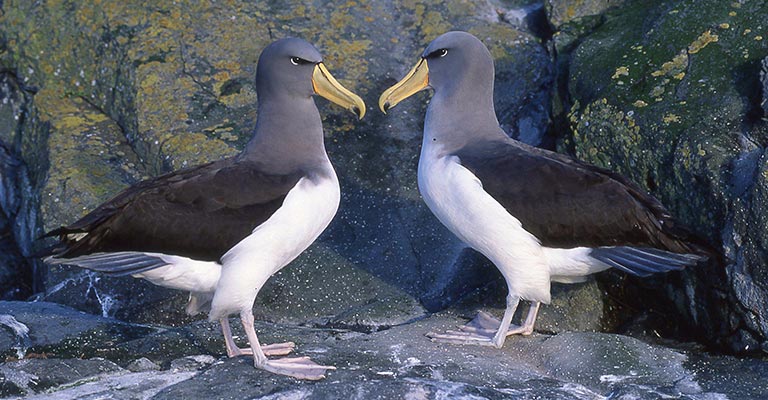
Endemic to the Chatham Islands of New Zealand, this species has a dark mantle and upper wings, a white face, throat, and underparts, and a yellow bill with a dark tip.
White-capped Albatross (Thalassarche steadi)
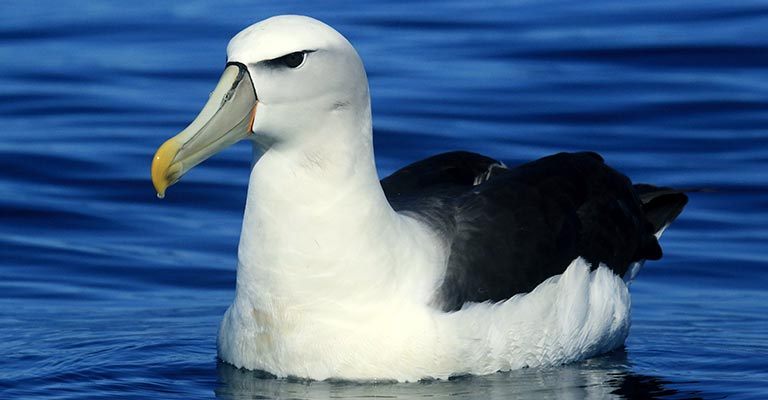
With a white cap on its head and a dark mantle, this species has a white face, throat, underparts, and a yellow-orange bill. It breeds on islands such as Campbell Island and the Auckland Islands.
Atlantic Yellow-nosed Albatross (Thalassarche chlororhynchos)
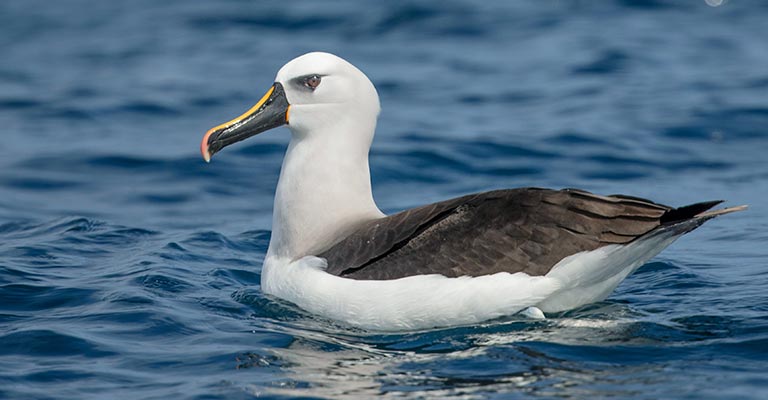
Found primarily in the South Atlantic Ocean, this species has a yellow bill with a black tip, a white face, throat, underparts, and dark upperparts. It breeds on islands such as Gough Island and Tristan da Cunha.
These albatross species play a unique role in marine ecosystems and face conservation challenges, including habitat loss, fisheries bycatch, and marine pollution.
Conservation efforts are crucial to ensuring the survival of these magnificent birds for generations to come.
Common Food of Albatrosses
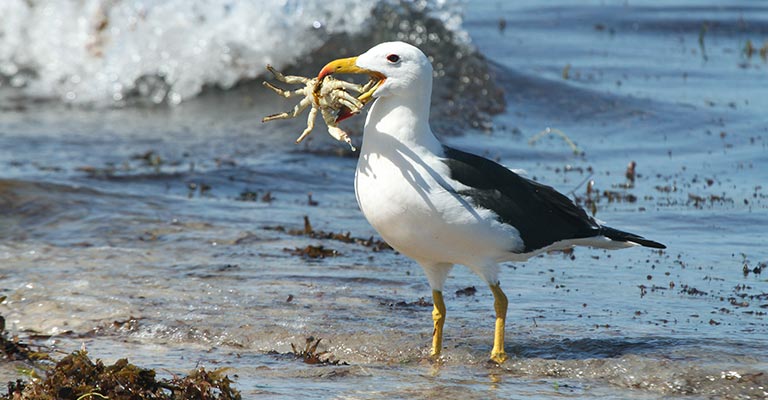
Albatrosses are primarily carnivorous seabirds with diverse diets that vary depending on their species and foraging habits. Familiar food sources for albatrosses include:
- Fish: Albatrosses feed on various fish species, including lanternfish, squid, and small pelagic fish like anchovies and sardines.
- Crustaceans: Some albatross species supplement their diet with crustaceans such as krill, shrimp, and crab larvae.
- Cephalopods: Squid and octopus are significant components of the albatross diet, providing valuable protein and nutrients.
- Offal and carrion: Albatrosses are opportunistic feeders and may scavenge offal from fishing vessels or carrion floating on the ocean surface.
- Flying fish: These agile birds are known to catch flying fish in mid-air as they leap from the water to escape predators.
Albatrosses are adept at foraging over vast oceanic expanses, using their keen eyesight and sense of smell to locate food sources efficiently.
Hunting Habit of Albatrosses
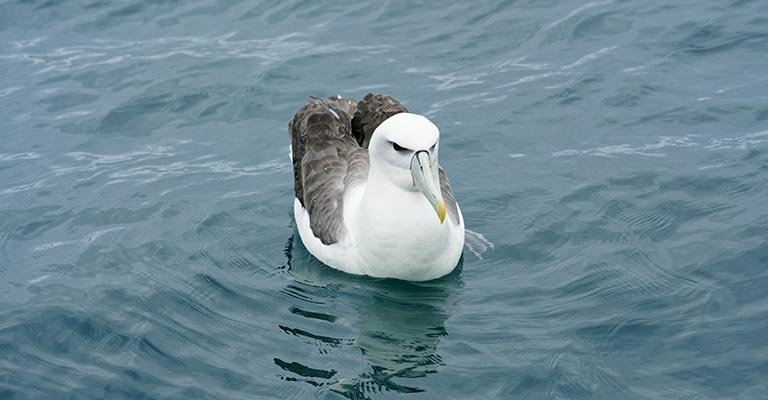
Albatrosses are highly skilled hunters, relying on their keen senses and efficient flight capabilities to locate and capture prey in the vast expanse of the open ocean.
With their exceptional eyesight, these birds can scan the water surface from great heights, spotting potential prey such as fish, squid, and crustaceans.
Once a target is identified, albatrosses use their impressive aerial agility to dive down and snatch prey from the water’s surface, often employing dramatic swoops and maneuvers to catch their elusive quarry.
Utilizing a combination of gliding and dynamic soaring techniques, albatrosses can cover large distances with minimal energy expenditure, allowing them to search for food over expansive oceanic regions for extended periods.
Their hunting behavior is opportunistic, taking advantage of both natural prey concentrations and the presence of fishing vessels to scavenge for offal and discarded fish.
Albatrosses Life History
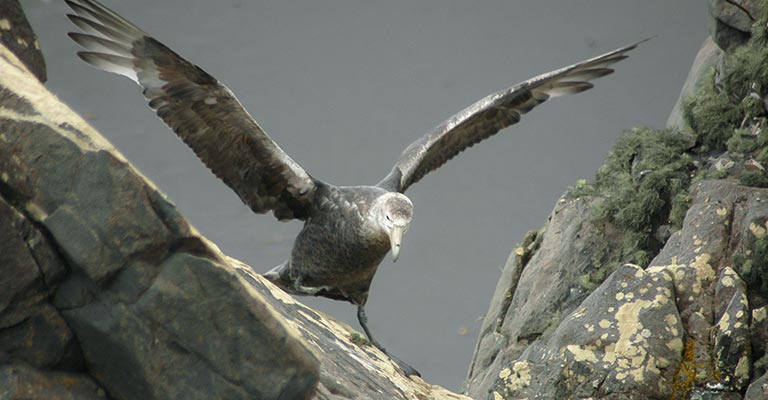
With their majestic wingspans and graceful flight, Albatrosses are iconic seabirds known for their remarkable life history and importance in marine ecosystems.
These fascinating birds exhibit a range of behaviors and adaptations that enable them to thrive in the harsh conditions of the open ocean.
From their foraging habits to nesting behaviors, albatrosses possess a unique life history that reflects their specialized role in the marine environment.
Food
Albatrosses are primarily carnivorous, feeding on diverse prey, including fish, squid, crustaceans, and occasionally carrion. They use their keen eyesight to spot prey from the air and employ aerial agility to capture it from the water’s surface.
Habitat
Albatrosses are pelagic birds, spending the majority of their lives at sea and only returning to land to breed and rear their young.
They inhabit many oceanic habitats, from the Southern Ocean around Antarctica to the North Pacific and North Atlantic Oceans.
Range Map
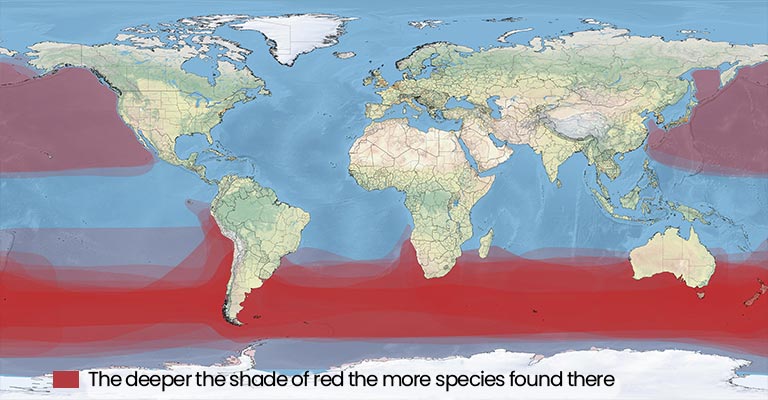
Albatross species have specific ranges dictated by their breeding and foraging behaviors. Range maps illustrate the distribution of various species across oceans and continents, highlighting key breeding colonies and foraging grounds.
Nesting
Albatrosses typically nest in large colonies on remote islands, often on cliffs or rocky outcrops, to avoid terrestrial predators. They construct simple nests of vegetation or soil where they lay a single egg.
| Nesting Details | Measurement/Fact |
| Clutch Size | Varies by species, normally around 6-8 cm |
| Number of Broods | Typically 1 per breeding season |
| Egg Length | Varies by species, generally around 10-12 cm |
| Egg Width | Typically, 5 to 6 months |
| Incubation Period | Ranges from 60 to 80 days |
| Nestling Period | Simple nest made of grass, vegetation, or soil, built on cliffs or rocky outcrops. |
| Egg Description | Often creamy white or pale in color, with variable markings such as speckles or spots depending on the species |
| Nest Construction | Simple nest made of grass, vegetation, or soil, built on cliffs or rocky outcrops |
Breeding
Breeding behavior in albatrosses involves elaborate courtship displays, with pairs forming long-term bonds. Incubation and chick-rearing duties are shared between parents, with chicks fledging after several months.
Diseases
Albatross populations are susceptible to various diseases, including avian pox and aspergillosis. These diseases can have significant impacts on individual birds and breeding colonies.
Treatment
Treatment of albatross diseases often involves veterinary care provided by conservation organizations and research institutions.
Interventions may include medication administration, wound treatment, and rehabilitation efforts for affected individuals.
Conservation
Albatrosses face numerous conservation challenges, including habitat loss, fisheries bycatch, pollution, and climate change.
Conservation efforts focus on mitigating these threats through habitat protection, bycatch reduction technologies, and international agreements to safeguard albatross populations and their marine habitats.
The life history of albatrosses encompasses a range of fascinating behaviors and adaptations that highlight their importance as apex predators of the open ocean.
Understanding and conserving these magnificent birds is essential for maintaining the health and integrity of marine ecosystems worldwide.
5 Fun Facts About Albatrosses
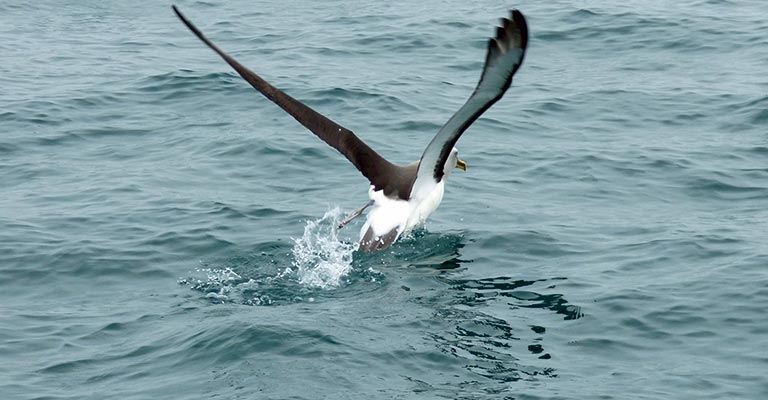
Albatrosses, with their impressive wingspans and remarkable abilities, are among the most fascinating seabirds in the world. Here are five fun facts about these magnificent birds:
- Dynamic Soaring Masters: Albatrosses are adept at dynamic soaring, a flying technique using wind gradients to gain energy and travel vast distances with minimal effort. They can cover thousands of miles without flapping their wings.
- Longest Wingspan in Birds: The wandering albatross holds the longest wingspan of any living bird, reaching up to 11 feet (3.4 meters). This remarkable wingspan allows them to glide effortlessly over the open ocean for extended periods.
- Monogamous Pairs: Albatrosses are known for their long-term monogamous relationships. Mated pairs often perform elaborate courtship rituals, including synchronized dances and bill-clacking displays, to reinforce their bonds.
- Incredible Lifespan: Some albatross species, such as the Laysan albatross, have astonishingly long lifespans, with individuals known to live for over 60 years. This longevity is crucial for successful breeding and maintaining populations over time.
- Marine Conservation Indicators: Albatross populations are essential indicators of marine ecosystem health. Their presence and breeding success reflect the abundance of prey species and the overall condition of oceanic habitats, making them invaluable for conservation efforts.
Wrapping Up
Albatrosses stand as magnificent ambassadors of the open seas, captivating us with their soaring flights, intricate courtship rituals, and vital role in marine ecosystems.
As apex predators of the ocean, they command our admiration and concern.
Yet, their future hangs precariously in the balance, threatened by habitat degradation, pollution, and climate change. We must rally together to protect these majestic birds and their oceanic habitats.
By implementing effective conservation measures, supporting research initiatives, and raising awareness about the plight of albatrosses, we can ensure that these remarkable seabirds continue to grace our skies and inspire generations to come.